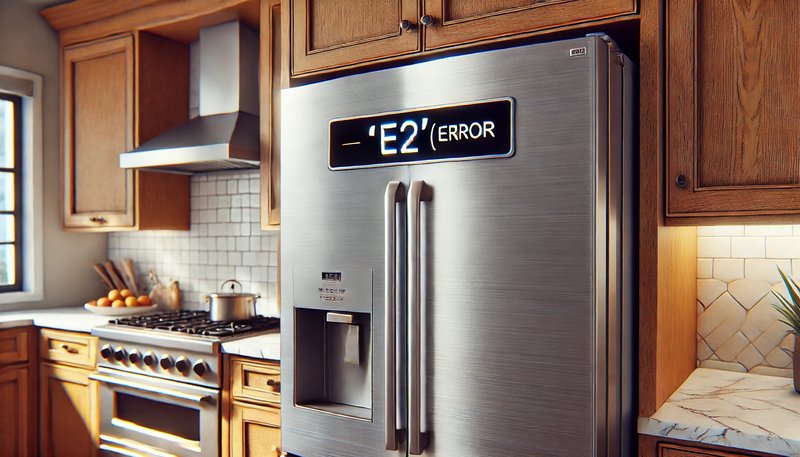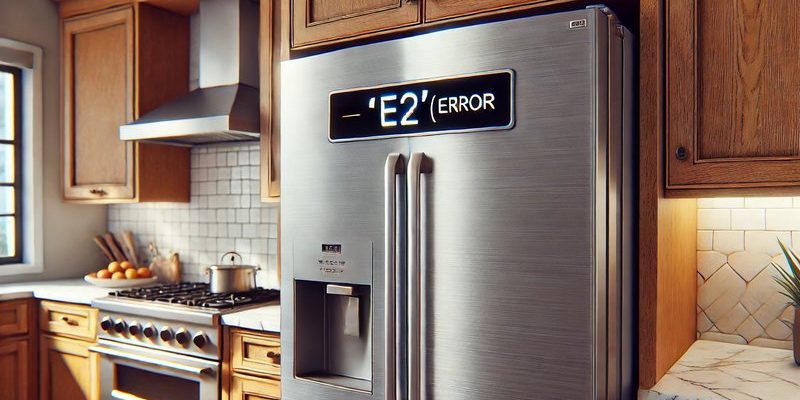
Error codes can be a little intimidating, especially if you’re not a tech guru. But think of your refrigerator like a car. Just as a dashboard light might indicate you need an oil change, a refrigerator error code signals something needs attention. When your GE refrigerator flashes F1, it’s trying to tell you something’s up with the appliance’s temperature sensor. In simpler terms, it’s like when you feel a draft and realize a window isn’t properly closed. Similarly, the refrigerator is having trouble figuring out how cold it should be.
Understanding Error Code F1
Let’s dive deeper into what the F1 error code actually means. This code mainly indicates an issue with the refrigerator’s temperature sensor, which could be either a sensor fault or a communication error. Imagine the temperature sensor as the thermostat in your house. If that thermostat isn’t working right, your house might end up too hot or too cold. Similarly, if the sensor in your fridge is faulty, it might not be keeping your food at the right temperature.
The temperature sensor, also known as a thermistor, is a small component that keeps track of the internal temperature of the refrigerator and sends this information back to the main control board. If this sensor sends erratic data or stops sending data altogether, the refrigerator doesn’t know how to adjust the cooling. It’s a bit like trying to cook without knowing the oven’s actual temperature.
So, when error code F1 appears, it’s a sign that the refrigerator might not be cooling as effectively as it should. This can be a problem because the last thing you want is for your milk to go bad, right? It’s essential to address this issue sooner rather than later to ensure your food stays fresh.
Causes and Effects of Error Code F1
Now, you might be wondering what causes this issue. Several things could lead to an F1 error code on a GE refrigerator. For instance, it could be a simple loose wire connection. Just like how a loose headphone jack might cause your music to crackle, a loose wire can prevent the temperature sensor from working correctly. Another common cause could be a damaged or malfunctioning temperature sensor. Over time, wear and tear can affect electronic components, especially if the fridge is in a hot or humid environment.
The effects of this error code are worth noting. If your refrigerator isn’t maintaining the correct temperature, perishables like dairy and meat could spoil, leading to food waste. Not to mention, constantly running at incorrect temperatures could cause your fridge to overwork, increasing your electricity bill. It’s like wearing shorts in winter—uncomfortable and inefficient!
Once you understand what might be causing the problem, it becomes easier to tackle. You could start by checking the wiring connections if you’re handy with tools. If you’re not comfortable with that, it might be a good idea to call in a professional technician who can diagnose and fix the problem accurately.
Safe Usage and Troubleshooting Tips
So, is it safe to continue using the fridge with an F1 error code? In the short term, the fridge will still keep running, but it might not operate optimally. It’s a lot like driving your car with a warning light on—it’ll get you where you need to go, but eventually, you’ll need to address the issue to avoid bigger problems. If your fridge is under warranty, reaching out to GE support or a qualified repair technician is the best course of action.
In terms of troubleshooting, you can try resetting the fridge by unplugging it for a few minutes and then plugging it back in. This is the equivalent of rebooting your computer when it freezes. Sometimes it works miracles, other times not so much, but it’s a simple first step.
As a preventative measure, keep the area around your fridge clean and dust-free. Just as you wouldn’t want dust clogging your computer fan, you don’t want it affecting your refrigerator’s cooling system. Regular maintenance checks, like inspecting door seals and ensuring proper air circulation, can also help prevent error codes from popping up.
In summary, while an F1 error code on your GE refrigerator isn’t ideal, it’s not the end of the world either. It’s a helpful reminder that something needs a bit of attention. Understanding what the error code means and knowing some basic troubleshooting steps can save you time and preserve your food’s freshness.
Always remember, you’re not alone in this. Many homeowners face similar issues and most find resolution through simple fixes or professional help. The key is to act promptly and ensure the heart of your kitchen continues to run smoothly without any hiccups.
So, grab that user manual, or give a friendly technician a call, and get your refrigerator back on track. After all, the kitchen is the heart of the home, and you want everything in it to be ticking along nicely!
